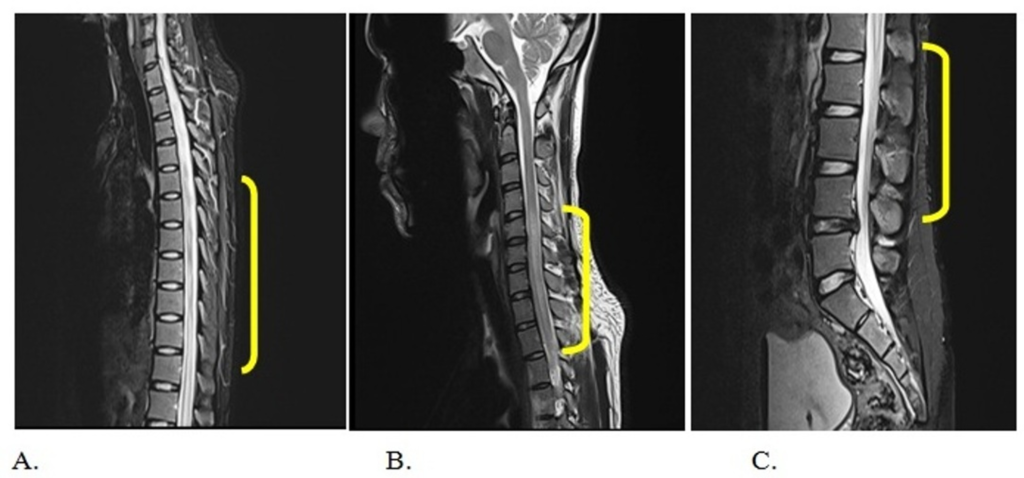Transverse Myelitis

What’s Transverse Myelitis?
Transverse myelitis refers to the inflammation of a section of the spinal cord caused by damage to the nerve cells in that area. This neurological disorder tends to cause damage to the myelin of the affected nerve cells thereby interrupting or halting communication between the nerve cells and the rest of the body. The myelin refers to fatty tissue that encompasses the nerve fibers and acts as an insulator.
Transverse myelitis generally occurs due to immune system disorders that attack the body’s healthy tissues and other medical disorders that affect the myelin including multiple sclerosis and neuromyelitis optica. Although transverse myelitis occurs rarely, it tends to develop more commonly in individuals between the ages of 10-19 years and 30-39 years.
What’s the Causes of Transverse Myelitis?
Although scientists have not found the definite cause of transverse myelitis, it generally occurs due to inflammation of any part of the spinal cord. Inflammation of the spinal cord can occur due to an infection or due to the body’s immune response to an infection. It can also occur when the body sends an immune response to attack its healthy tissues. Conditions and Infections that can lead to transverse myelitis may include:
- Autoimmune disorders such as lupus and Sjorgren’s syndrome
- Multiple sclerosis, which causes the immune system to destroy the nerve fiber coverings in the brain and spinal cord
- Bacterial infections such as tuberculosis, syphilis, Lyme disease, tetanus, and certain types of bacterial pneumonia
- Viral infections such as hepatitis B, influenza, West Nile, HIV, mumps, measles, and herpes viruses
- Fungal infections including Blastomyces and Cryptococcus
- Certain parasitic infections
What’s the Symptoms of Transverse Myelitis?
The symptoms of transverse myelitis usually occur in a few hours but may develop gradually over some time in some cases. An individual should seek emergency medical care when experiencing symptoms of transverse myelitis. The most common symptoms of transverse myelitis may include:
- Sharp pain that extends from the back to the legs, arms, and chest
- Numbness, tingling, or weakness in the arms and legs
- Increased sensitivity to touch or extreme heat or cold
- Burning sensation in the back, arms, or legs
- Partial or total paralysis in the arms or legs
- Bladder or bowel incontinence
- Loss of appetite
- Muscle spasms
How do Specialists Diagnose Transverse Myelitis?
A specialist may request a patient’s comprehensive medical and family history before making a diagnosis. The specialist will also order some tests to rule out any other neurological condition. Diagnostic tests for transverse myelitis may include:
- Magnetic Resonance Imaging (MRI) of the spine and brain to get detailed images and rule out other possible causes of nerve damage such as spinal stenosis, a slipped disc, or a tumor.
- Lumbar puncture or spinal tap to test the fluid surrounding the brain and spinal cord
- Blood tests to rule out diseases such as HIV and lupus
How do Specialists treat Transverse Myelitis?
Although transverse myelitis does not have a cure, a specialist will recommend one or a combination of treatment options to help relieve pain and reduce inflammation. Treatment options for transverse myelitis may include:
- Steroids to reduce inflammation in the spine
- Physical and occupational therapy to help strengthen the muscles and repair nerve damage
- Plasma exchange therapy to help reduce inflammation in the case where steroids fail to work
- Over-the-counter pain medications such as ibuprofen
- Antiviral medications in the case where a virus occurs as the main cause of the inflammation
References
Transverse myelitis fact sheet. National Institute of Neurological Disorders and Stroke. http://www.ninds.nih.gov/disorders/transversemyelitis/detail_transversemyelitis.htm.
Transverse myelitis. National Organization for Rare Disorders. https://rarediseases.org/rare-diseases/transverse-myelitis/.
Wingerchuk D, et al. Acute disseminated encephalomyelitis, transverse myelitis, and neuromyelitis optica.
Sarma D, et al. (2020). A case report of acute transverse myelitis following novel coronavirus infection.
ncbi.nlm.nih.gov/labs/pmc/articles/PMC7434287/
National Institute of Neurological Diseases and Stroke. Transverse Myelitis Fact Sheet. (http://www.ninds.nih.gov/disorders/transversemyelitis/detail_transversemyelitis.htm)
